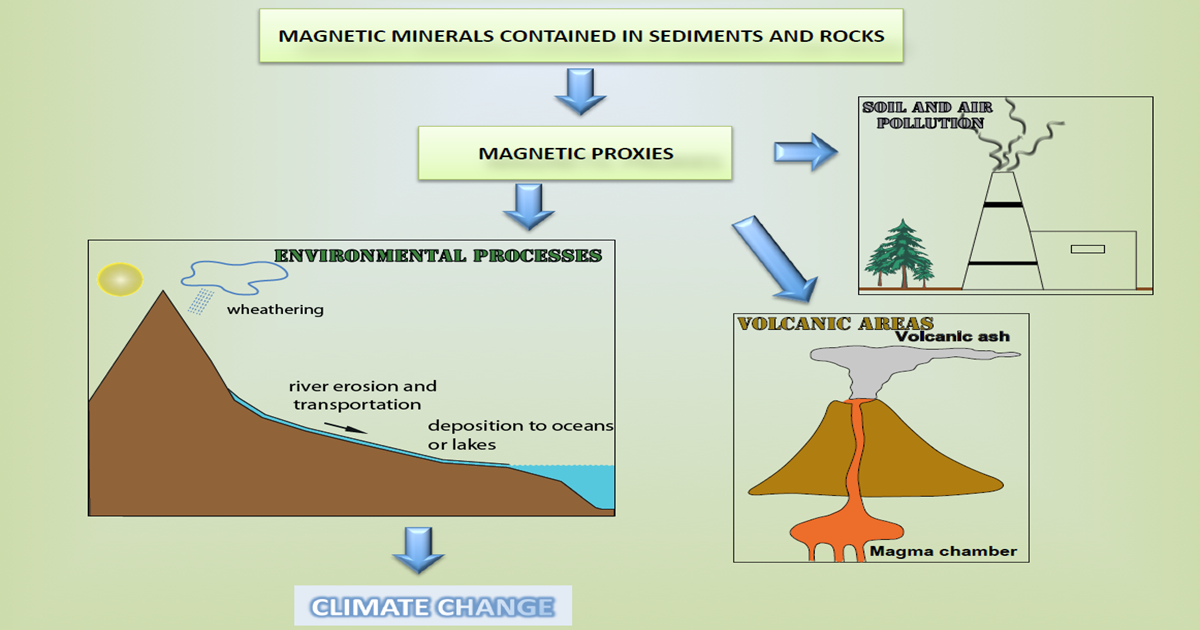Recent Applications and Advances in Environmental Magnetism
A special issue of Applied Sciences (ISSN 2076-3417). This special issue belongs to the section "Earth Sciences".
Deadline for manuscript submissions: closed (30 December 2022) | Viewed by 4389

Special Issue Editor
Special Issue Information
Dear Colleagues,
Environmental magnetism is based on analyses of sediments’ and rocks’ magnetic properties. These are carried out in the field or at laboratory and are aimed at better understanding environmental processes and their variations in time and/or in space. The advantages of this method are the rapid and mostly non-destructive measurements and numerous applications. Magnetic parameters are successfully used as proxies e.g., in paleoclimate, paleoceanographic, and archeomagnetic studies, to identify tephra layers, to correlate stratigraphic sequences, and to monitor anthropogenic air and soil pollution. For these reasons, environmental magnetism is employed in the most important oceanic and continental drilling programs.
Over the last decade, the development of new techniques such as the use of the hysteresis and first-order reversal curve diagrams or out-of-phase magnetic susceptibility often related to instrument innovation has improved the efficiency of the method.
This Special Issue aims to collect manuscripts on novel approaches and new experiments regarding environmental magnetism and rock magnetism.
Topics may include but are not limited to the following:
- Sedimentary processes
- Magnetic minerals
- Iron biomineralization
- Paleoclimate
- Paleoceanography
- Archeomagnetism
- Air and soil pollution
- Magnetic minerals in polar ice
- Speleothem magnetism
Dr. Alessandra Venuti
Guest Editor
Manuscript Submission Information
Manuscripts should be submitted online at www.mdpi.com by registering and logging in to this website. Once you are registered, click here to go to the submission form. Manuscripts can be submitted until the deadline. All submissions that pass pre-check are peer-reviewed. Accepted papers will be published continuously in the journal (as soon as accepted) and will be listed together on the special issue website. Research articles, review articles as well as short communications are invited. For planned papers, a title and short abstract (about 100 words) can be sent to the Editorial Office for announcement on this website.
Submitted manuscripts should not have been published previously, nor be under consideration for publication elsewhere (except conference proceedings papers). All manuscripts are thoroughly refereed through a single-blind peer-review process. A guide for authors and other relevant information for submission of manuscripts is available on the Instructions for Authors page. Applied Sciences is an international peer-reviewed open access semimonthly journal published by MDPI.
Please visit the Instructions for Authors page before submitting a manuscript. The Article Processing Charge (APC) for publication in this open access journal is 2400 CHF (Swiss Francs). Submitted papers should be well formatted and use good English. Authors may use MDPI's English editing service prior to publication or during author revisions.
Keywords
- Environmental magnetism
- Magnetic properties
- Magnetic minerals
- Rock magnetism
- Magnetic proxies
- Remanent magnetization
Benefits of Publishing in a Special Issue
- Ease of navigation: Grouping papers by topic helps scholars navigate broad scope journals more efficiently.
- Greater discoverability: Special Issues support the reach and impact of scientific research. Articles in Special Issues are more discoverable and cited more frequently.
- Expansion of research network: Special Issues facilitate connections among authors, fostering scientific collaborations.
- External promotion: Articles in Special Issues are often promoted through the journal's social media, increasing their visibility.
- Reprint: MDPI Books provides the opportunity to republish successful Special Issues in book format, both online and in print.
Further information on MDPI's Special Issue policies can be found here.





